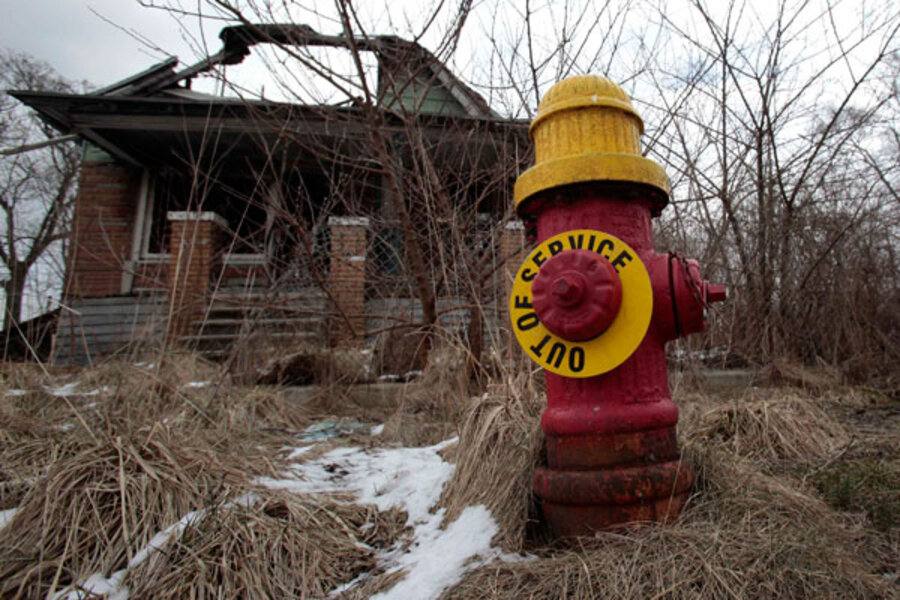Why bankrupt Detroit wants to destroy nearly one-quarter of its houses
Loading...
Detroit unveiled a plan Tuesday to destroy nearly 85,000 homes – some 22 percent of its entire housing stock – in a bid to ease urban blight and stimulate economic development.
The initial five-year program is expected to cost $850 million, but that price tag could increase to $2 billion if the city targets industrial properties that contain hazardous materials.
Reducing blight is seen as crucial to Detroit’s revival. Previous administrations have had to deal with maintaining a city whose urban shell has become far too large for its current decreasing population. That has left officials to merely manage blighted neighborhoods instead of using that money to encourage growth and reinvestment.
“Detroit needs to be focused on offense and what [it] could be. You can only get there when you get rid of all this … blight,” said Dan Gilbert, founder of Quicken Loans and part of the task force of federal officials, city officials, and business leaders organized last fall to address the blight crisis.
Once a city of more than 2 million people, Detroit now has fewer than 700,000. The exodus played into Detroit’s fiscal crisis, which resulted in it being the largest American city to declare bankruptcy.
Its restructuring plan, if approved by a federal judge, will commit nearly $500 million of the city’s budget to the blight initiative, said Kevyn Orr, the city’s state-appointed emergency financial manager. The balance of the money is expected to be raised from private businesses and philanthropy groups during the coming year.
Unless blight is dealt with, Mr. Orr added, investors will not feel comfortable bringing their money to the city.
“The analysis has been done over time that blight is either a conduit or a contagion. If you don’t get at blight, you don’t get at public safety, you don’t get at economic development,” he said.
The initial $850 million focuses on residential housing and small-scale commercial buildings, where the demolition cost per structure is estimated at $10,000. The 300-page report released Tuesday says that sum could increase to nearly $2 billion if larger-scale commercial and industrial sites are addressed, due to the additional cost of asbestos and lead abatement.
The plan is not the first to address blight in Detroit, but city officials say it is the largest and most aggressive.
In September, President Obama pledged $320 million in federal, state, and private grants to help Detroit’s economic recovery. This included some money targeting blight.
Previous city administrations have also pledged to fight blight but have struggled with dwindling resources and political pushback. Former Mayor Dave Bing launched the most recent effort, pledging to remove 3,000 blighted homes by the end of his administration.
Current Detroit Mayor Mike Duggan said previous efforts lacked cooperation between federal, state, and local agencies, as well as the involvement of private investors and the community. To address the blight crisis, Mayor Duggan created a Department of Neighborhood, which consolidated and accelerated several programs, including the city’s home auction program, with strict timelines and guidelines.
The mayor’s efforts received a boost when JPMorgan Chase, the nation’s biggest bank, committed $100 million in loans and grants over 10 years to help in the city’s economic recovery, including $25 million toward blight removal, which will include loans for homeowners involved in the auction process.
“Once you have a strategy and momentum, money tends to follow,” Mayor Duggan said.
Duggan said that the blight removal process will not target only private landowners, but also will involve city buildings. For example, the 70 empty buildings owned by Detroit Public Schools represent the “single biggest source of blight on the community,” he said.
Most of the structures targeted for either demolition or remediation are residential (73,035), while the rest are overgrown vacant lots and non-residential structures like private businesses or churches.








